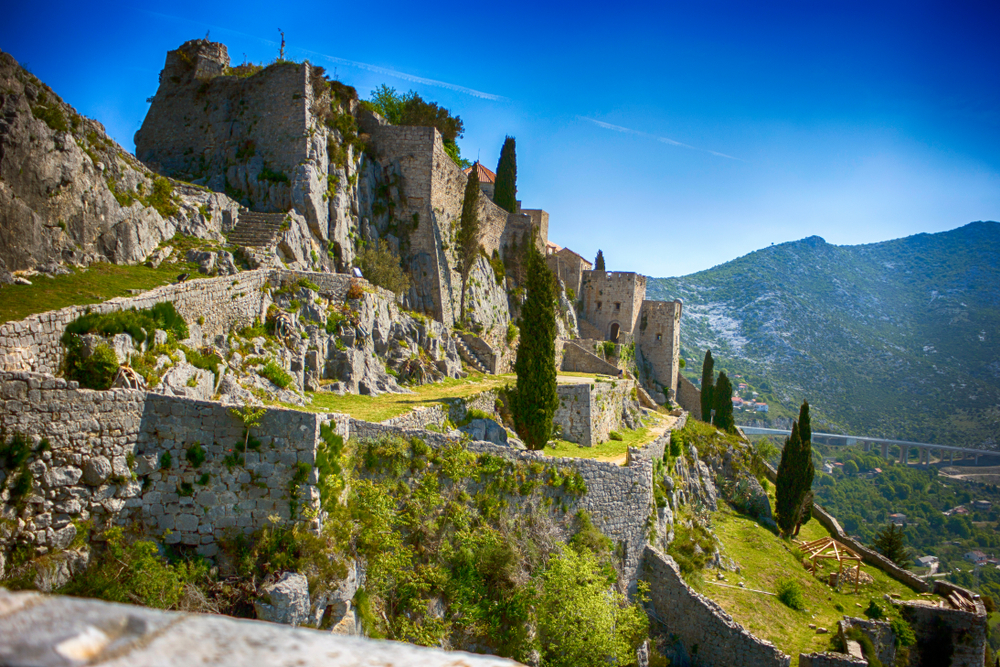
Croatia is home to a remarkable array of fortresses standing as a testament to its strategic importance and cultural heritage. From medieval strongholds overlooking coastal towns to fortified citadels guarding inland cities. These fortresses offer a glimpse into Croatia’s past, showcasing the architectural prowess and defensive strategies of their times. In this post about fortresses in Croatia, we unveil the most extraordinary of these defense buildings. These haven’t only played a pivotal role in Croatia’s history but continue to charm visitors from around the world. Each of these fortresses has a unique story to tell, contributing to the tapestry of Croatia’s diverse and fascinating history.
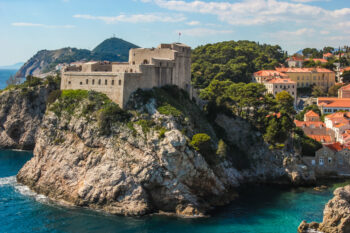
The Lovrijenac Fortress stands as a monumental and awe-inspiring citadel situated in Croatia. Positioned outside the city walls of Dubrovnik, this fortress commands a commanding view of the seascape, asserting its dominance. This splendid fortress was masterfully crafted in a mere three months by Juraj Dalmatinac during the 15th century.
The impetus for its swift construction arose from the Dubrovnik residents’ awareness of the Venetians’ intentions to construct a fortress on the very rock. Lovrijenac played a substantial role in thwarting any attempts to undermine the Republic’s autonomy, particularly those by the Venetians. Shrouded in an aura of legends, the fortress carries tales of its origins and the valiant feats of its protectors. You can also visit the place through a variety of cruises.
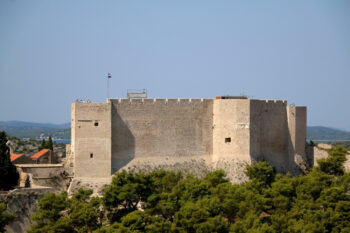
A must-include destination during any Šibenik visit is the St. Michael Fortress. It is renowned as the oldest among the quartet of Šibenik’s fortifications. It once stood as an assurance of Šibenik’s security, safeguarding the ancient autochthonous Croatian city on the Dalmatian coastline. Presently, it assumes a role of paramount significance as a cultural and historical treasure within the city.
Situated advantageously, the fortress lies at the base where medieval Šibenik flourished. Over time, the ownership of the fortress underwent numerous shifts.
Croatian nobility held dominion over it, later yielding to the influence of Croatian-Hungarian monarchs, Byzantium, and Venice. Transitioning into the early 15th century, the fortress came under Venetian control until the end of the 18th century.
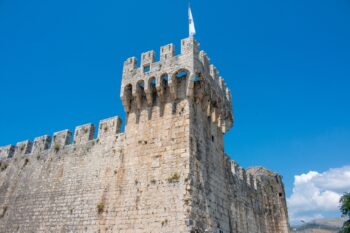
The Kamerlengo Fortress was erected during the 15th century by the Venetians upon establishing their dominion. This stronghold played a pivotal role as a military outpost for the Venetian troops operating within this segment of the Adriatic. Its nomenclature pays homage to the city’s Master of Camerarius.
Notably, in 1378, a maritime clash unfolded before the tower involving the forces of Venice and Genoa. The preeminent polygonal tower, enclosed within the fortress, was conceivably constructed at an earlier time. The fortress now serves as a multifaceted hub encompassing a multimedia center, an al fresco cinema, and a platform for a diverse array of cultural affairs. You can visit this monument as part of an 8-day cruise with Always Croatia.
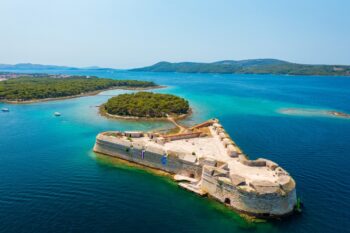
The St. Nicholas Fortress exemplifies Renaissance architecture within the context of Venetian fortification design. Undoubtedly, this fortress bears witness to the rich tapestry of global architectural heritage. It also earned a place on the UNESCO World Heritage List in 2017.
Initiating construction in 1540 after successfully recapturing Skradin from Ottoman control, the fortress’s strategic significance was underscored. This move highlighted the necessity of reinforcing Šibenik’s defenses, given its pivotal role as a strategic port. The historical inception of the St. Nicholas Fortress reflects the architectural prowess of Sanmicheli.
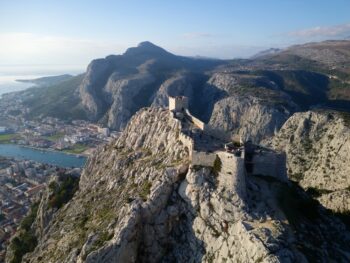
One of the best strategically positioned fortresses in Croatia is Fortica or Starigrad. Its construction in the 15th century primarily served the purpose of providing shelter and defense against the Ottoman Turks. Despite its modest size compared to other fortresses in Omiš, the construction is one of the most remarkable defensive structures in the Adriatic. Positioned on precipitous cliffs that overlook the Cetina Canyon and the town below, it occupies the utmost western spur of the Dinara mountain. This fortification is erected upon the site where an ancient hillfort and fortress once stood. The breathtaking panorama offers a good enough reason to climb up its slopes. Truly a sight that will linger in your memory for days to come.

This fortress is positioned strategically amid the embrace of two mountains—Kozjak and Mosor. Due to this position, it assumed a pivotal role in safeguarding the entirety of Dalmatia against Ottoman incursions. Klis Fortress stands as a paradigm of comprehensive fortification architecture within Croatia and dates back to the 5th century.
The fortress is acknowledged as one of the most prominent bastions in Croatia. Klis’s story is predominantly rooted in the era of Turkish conflicts. It’s a time well remembered for its guardian, Petar Kružić, and his warriors who tenaciously thwarted Turkish endeavors for decades. It wasn’t until 1537 that the fortress ultimately succumbed to Ottoman control.
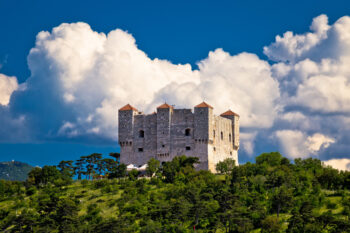
The Nehaj Fort was constructed in 1558 by Ivan Lenković and Captain Herbart VIII. Today, it stands as an emblem of Senj city. You can call it a franken-fort, as it was crafted out of dilapidated churches, monasteries, and dwellings! Originally situated beyond the city walls, the fortress boasts dimensions of 18 meters in height and 23 meters in width.
The entrance leads you through stairs traversing a wooden bridge, finishing with a narrow double doorway. The walls feature approximately a hundred openings for musketry and eleven sizable cannon apertures. It served as both a haven for the Uskoks and as a bulwark defending the city of Senj.
The majestic allure of fortresses in Croatia is here to amaze you. Step into the shoes of those who defended their lands and shaped the course of the nation’s narrative.